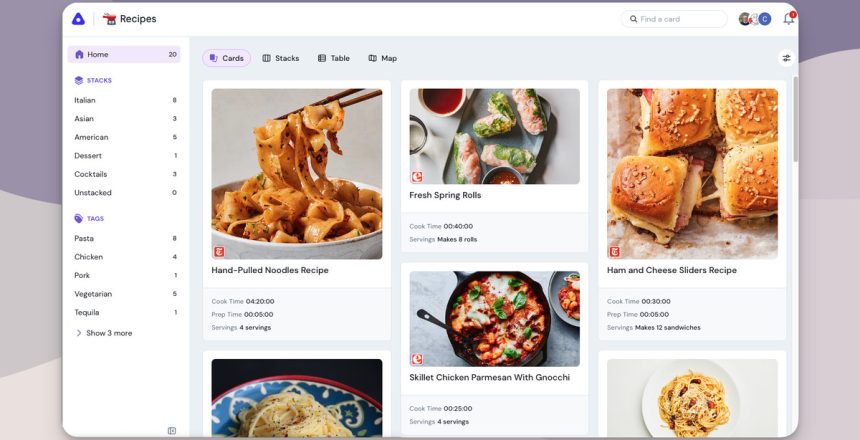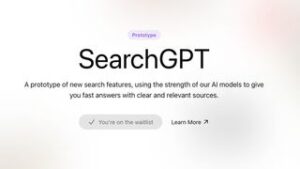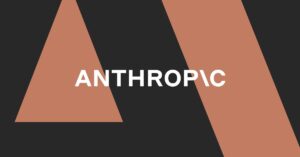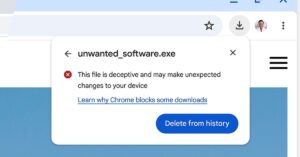/cdn.vox-cdn.com/uploads/chorus_asset/file/25380555/Aboard_screen.png)
Aboard is not an easy app to explain. It used to be easier: at first, it was a way to collect and organize information — Trello meets Pinterest meets that spreadsheet full of links you use to plan your vacation. The company’s founders, Paul Ford and Rich Ziade, are two longtime web developers and app creators (and, in Ford’s case, also an influential writer about the web) who previously ran a well-liked agency called Postlight. They did a bunch of interesting work on parsing websites to pull out helpful information, and they built a handy visual tool for displaying it all. “People love to save links,” Ziade says, “and we love to make those links beautiful when they come in.” Simple!
But now I’m sitting here in a co-working space in New York City, a few minutes after an earthquake hit and a few days before Aboard’s biggest launch yet, and Ziade is showing me something very different. He opens up a beta version of the app and clicks a button, and after a second, the page begins to change. A database appears out of nowhere, with a bunch of categories — Year, Title, Genre, and more — that start to populate with a number of well-known movie titles. The board, as Aboard calls it, titles itself “Movie Night.” With one click, Ziade just built — and populated — a way to track your viewing habits.
Maybe the best way to explain the new Aboard is not as a Pinterest competitor but as a radical redesign of ChatGPT. When Ziade made that board, all he was really doing was querying OpenAI’s GPT-3.5. The company’s chatbot might have returned some of the same movies, but it would have done so with a series of paragraphs and bullet points. Aboard has built a more attractive, more visual AI app — and has made it so you can turn that app into anything you want.
Ziade and Ford imagine three main things you might do with Aboard. The first, “Organize,” is closest to the original vision: ask the tool for a bunch of things to do in Montreal this summer, and it’ll populate a board with some popular attractions and restaurants. Ask Aboard to meal plan your week, and it’ll create a board segmented by day and by meal with nicely formatted recipes. The second, “Research,” is similar but a little more exploratory: ask Aboard to grab the most interesting links about African bird species, and it’ll dump them all into place for you to peruse at your leisure.
Like any AI product right now, this is sometimes cooler in theory than in reality. When I ask Ziade to make a board with important tech moments from 2004, it pulls a bunch of them into separate cards: Google’s IPO, the launch of Gmail, the iPod Mini launch. And then the iPod Mini launch again and then another time and then three more times after that. Ziade and Ford both laugh and say this is the stuff they see all the time. A few times, a demo just fails, and each time, Ford says something to the effect of “Yeah, that just happens when you ping the models.” But he says it’s also getting better fast.
The third use case, which Aboard calls “Workflow,” is where Aboard figures its true business lies. Ziade does another demo: he enters a prompt into Aboard, asking it to set up a claims tracker for an insurance company. After a few seconds, he has a fairly straightforward but useful-looking board for processing claims, along with a bunch of sample cards to show how it works. Is this going to be perfect and powerful enough for an insurance company to start using as is? No. But it’s a start. Ford tells me that Aboard’s job is to build something good enough but also not quite good enough — if the app can work just well enough to get you to customize it the rest of the way to fit your needs, that’s the goal.
An Aboard board can be a table, a list, a gallery, and more
This is ultimately a very business-y use case and puts Aboard in loose competition with the Airtables and Salesforces of the world. Ziade and Ford are upfront about this. “We want to be in professional settings,” Ford says, “that’s a real thing we’re aiming for. Doesn’t have to be for big enterprise, but definitely small teams, nonprofits, things like that.” He figures Aboard can sell to companies by saving them a bunch of time and meetings spent figuring out how to organize data and just get them started right away. An Aboard board can be a table, a list, a gallery, and more; it’s a pretty flexible tool for managing most kinds of data.
I have no particular business use for Aboard, but I’ve been testing the app for a while, and it’s a really clever way to redesign the output of a large language model. Particularly when it’s combined with Aboard’s ability to parse URLs, it can quickly put together some really useful information. I’ve been saving links for months as I plan a vacation, and I had Aboard build me a project planner for managing a big renovation of my bathroom. (It’s all very exciting stuff.)
Just before Aboard’s AI launch, I tried building another board: I prompted the AI to create “a board of Oscar-winning movies, with stacks for each movie genre and tags for Rotten Tomatoes scores,” and Aboard went to work. It came back with stacks (Aboard’s parlance for sub-lists) for six different movie genres, tags for various score ranges, plus runtimes, posters, and Rotten Tomatoes links for each flick. Were all the movies it selected Best Picture winners? Nope! Did it get the ratings right, like, ever? Nope! But it still felt like a good start — and Aboard always gives you the option to delete the sample cards it generates and just start from scratch.
Aboard is just one of a new class of AI companies, the ones that won’t try to build Yet Another Large Language Model but will instead try to build new things to do with those models and new ways to interact with them. The Aboard founders say they ultimately plan to connect to lots of models as those models become, in some cases, more specialized and, in others, more commoditized. In Aboard’s case, they want to use AI not as an answer machine but as something like a software generator. “We still want you to go to the web,” Ford says. “We want to guide you a bit and maybe kickstart you, but we’re software people — and we think the ability to get going really quickly is really, really interesting.” The Aboard founders want AI to do the work about the work, so you can just get to work.





